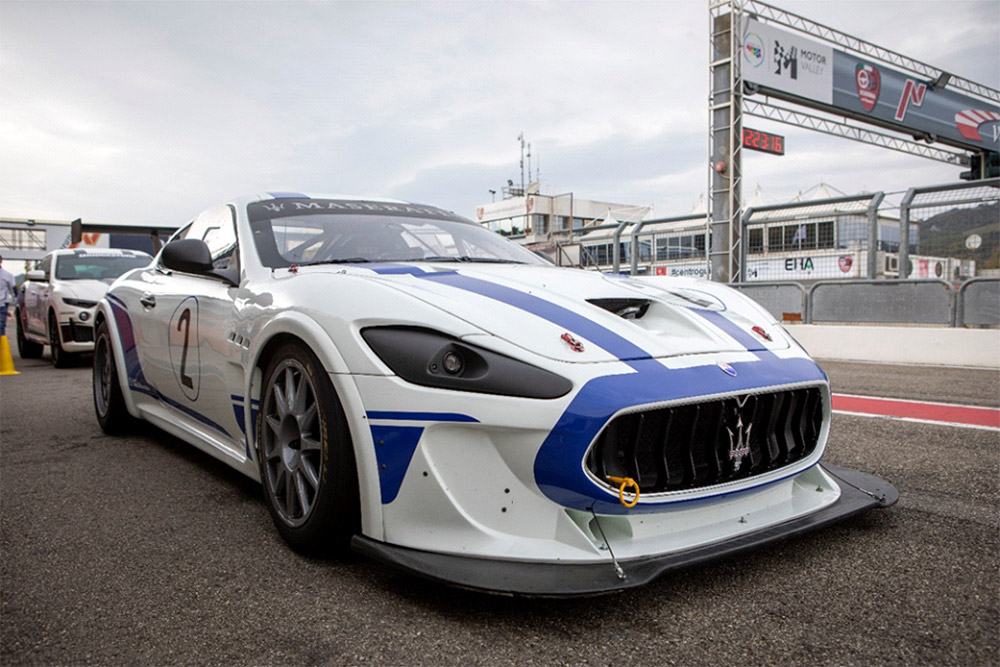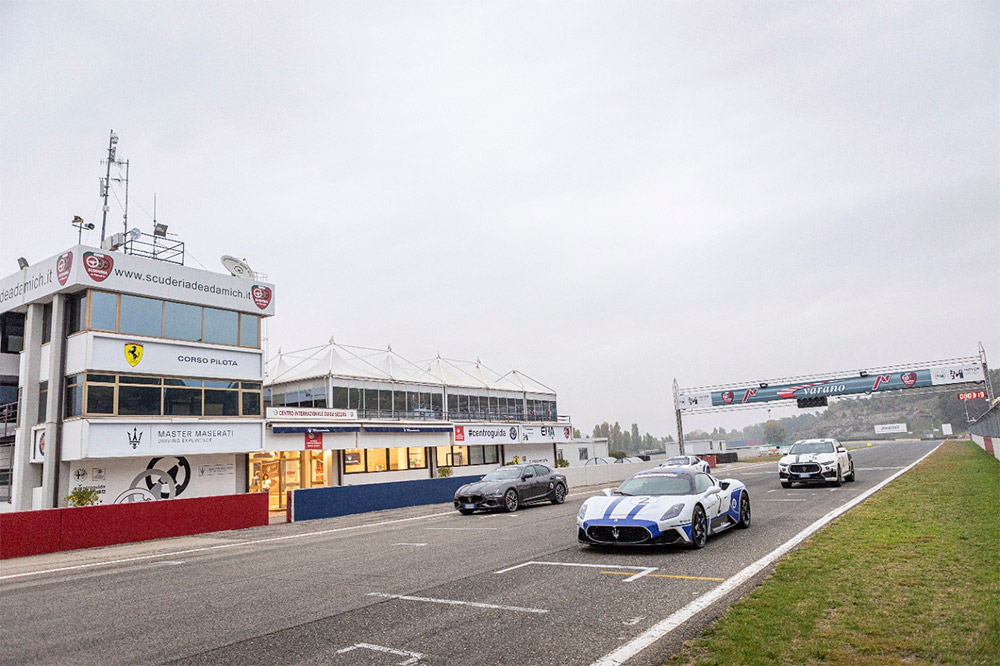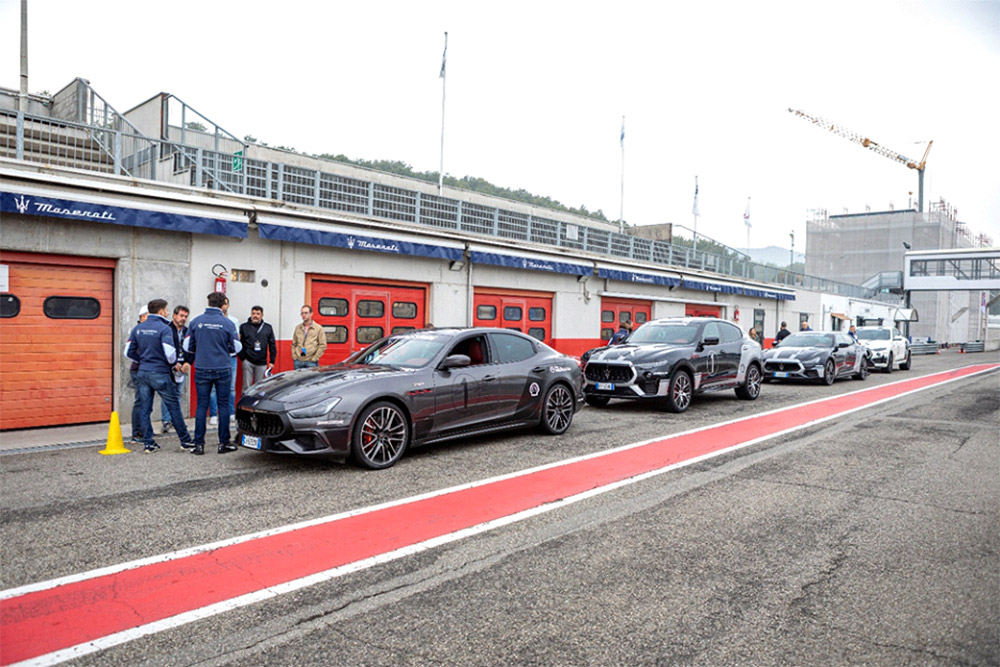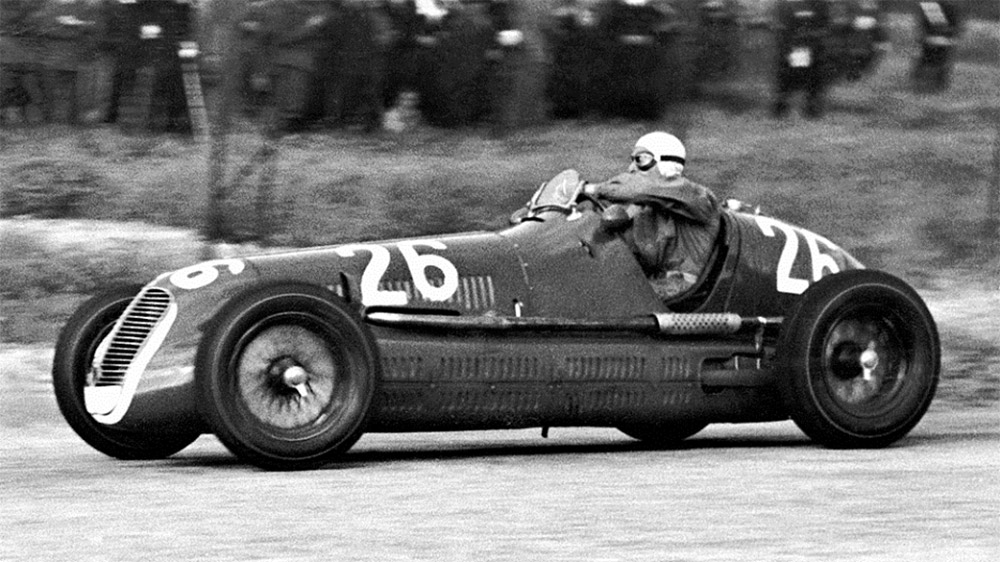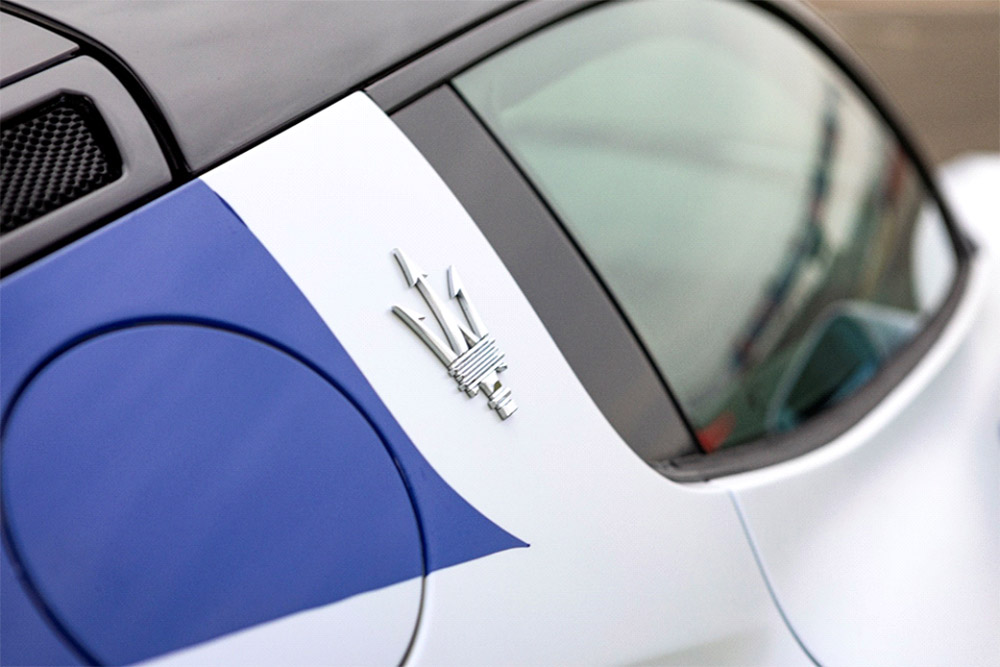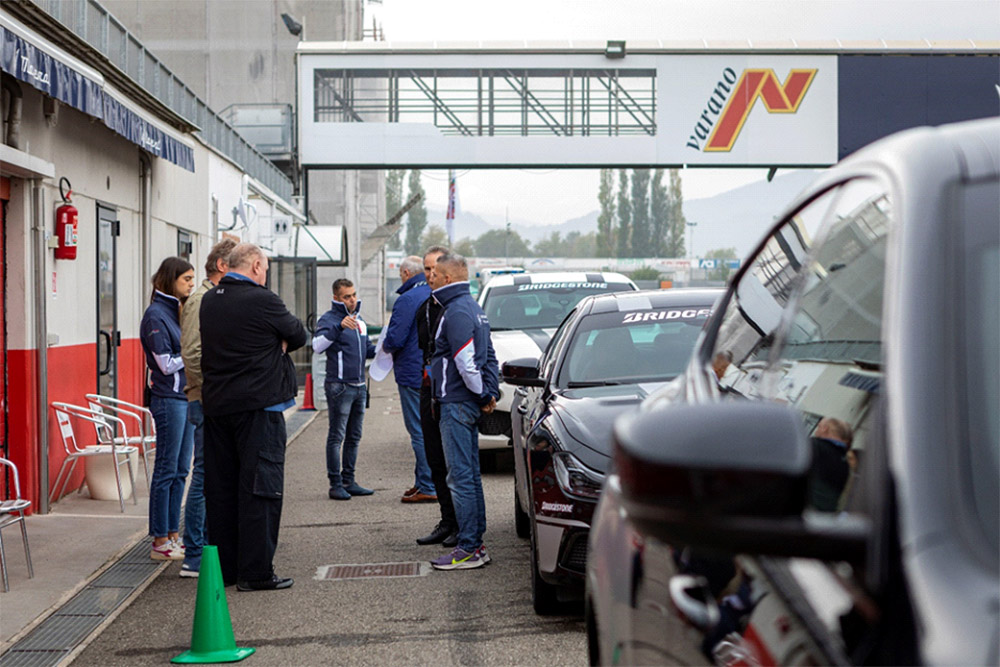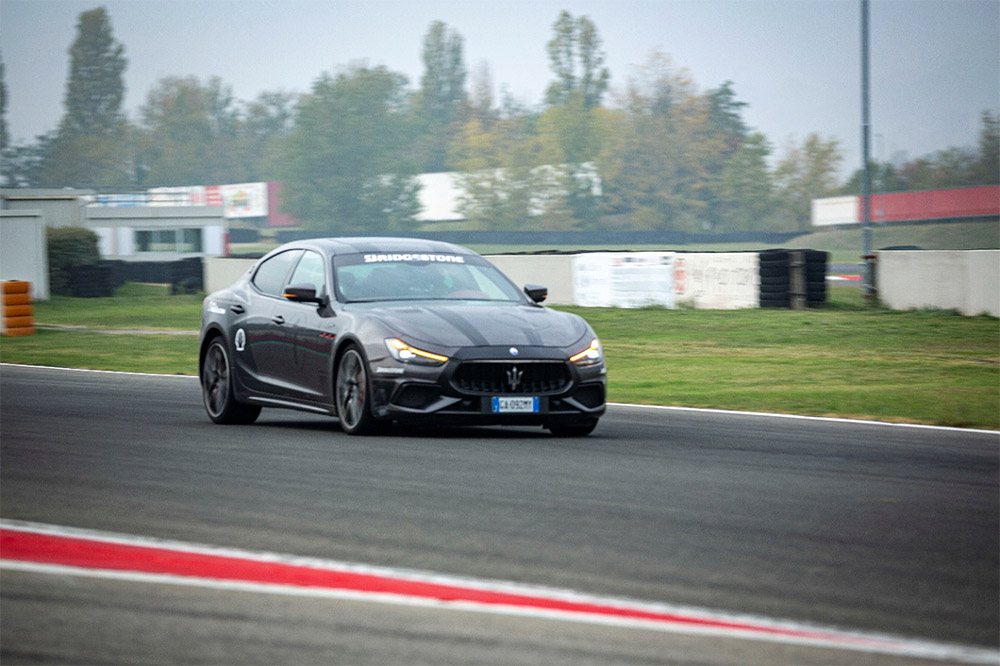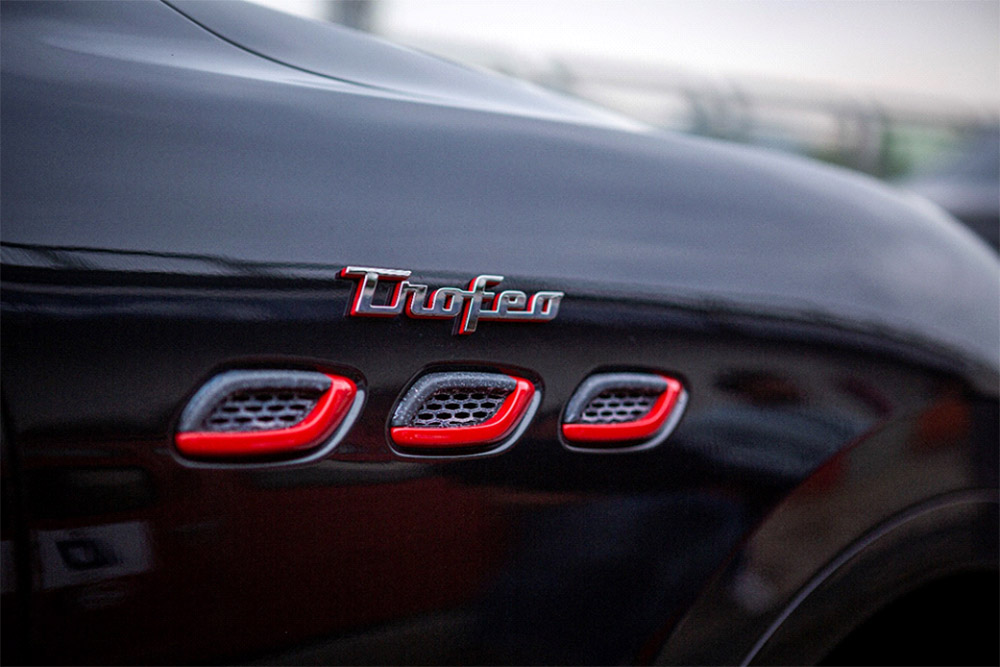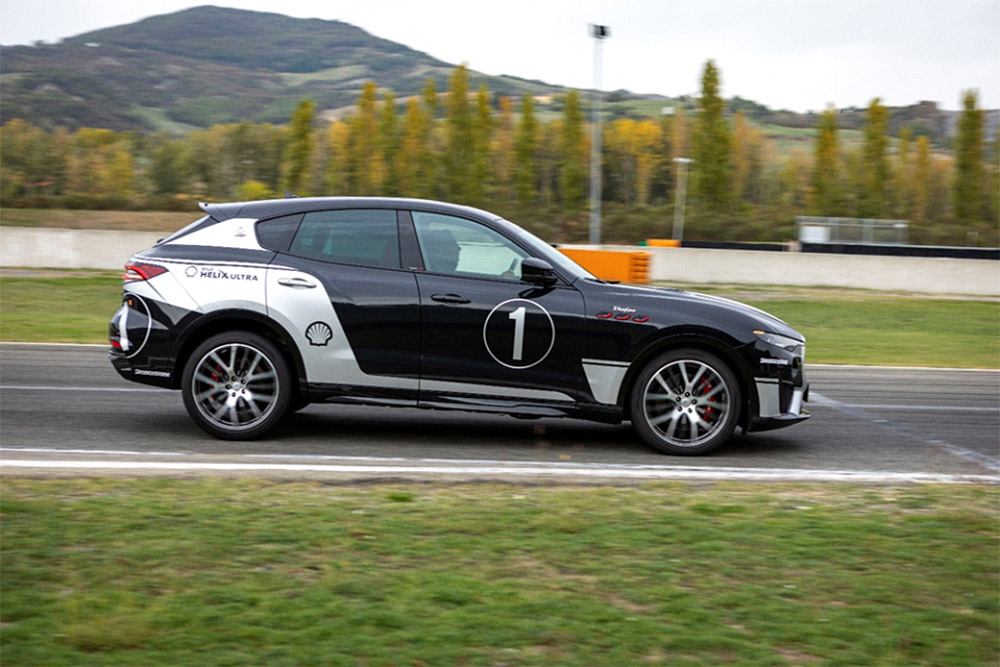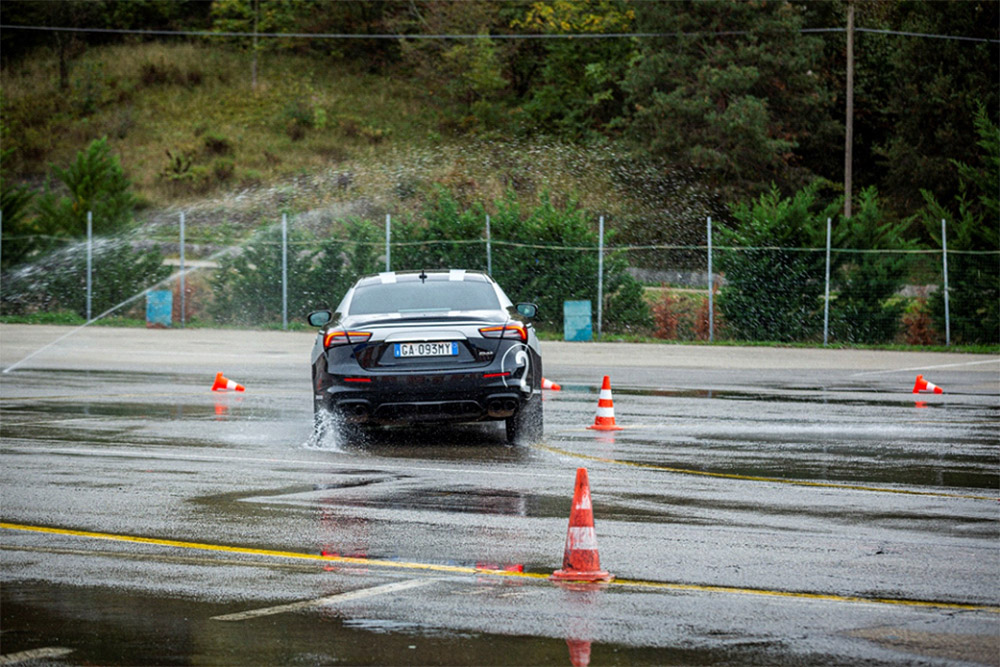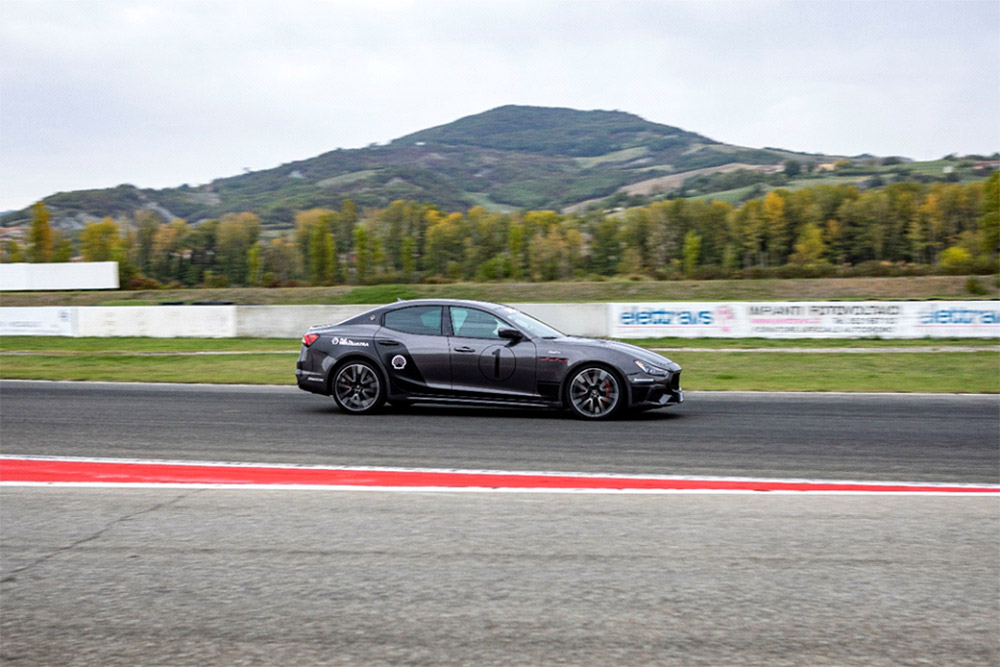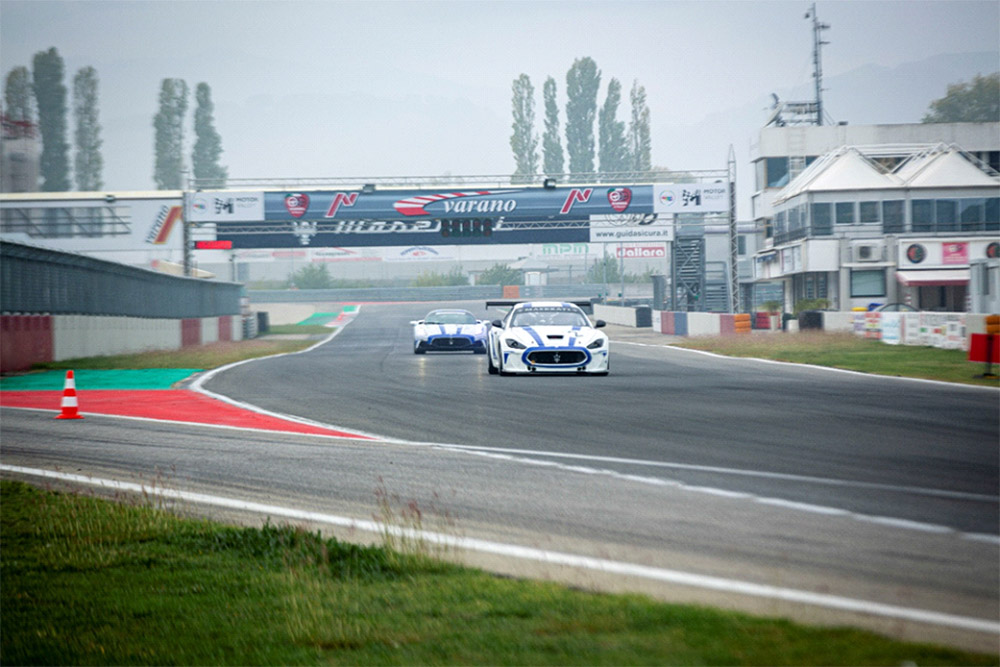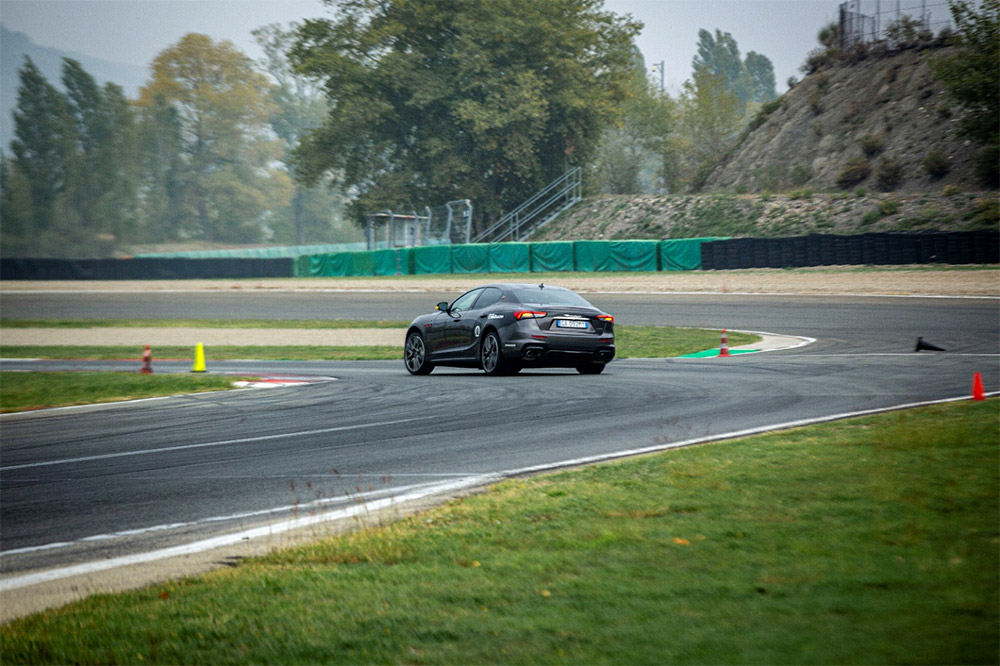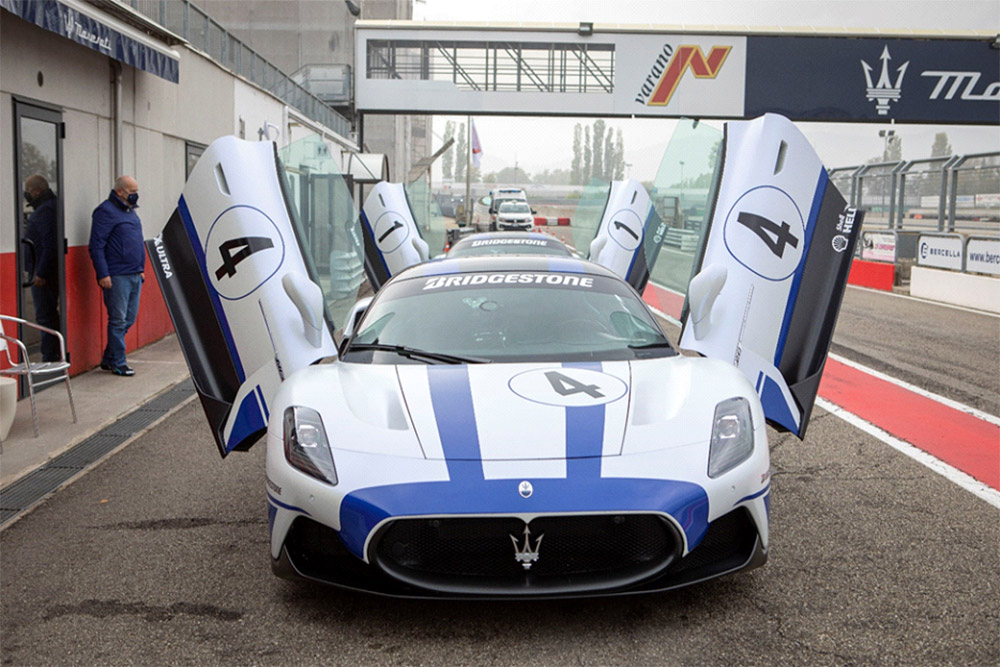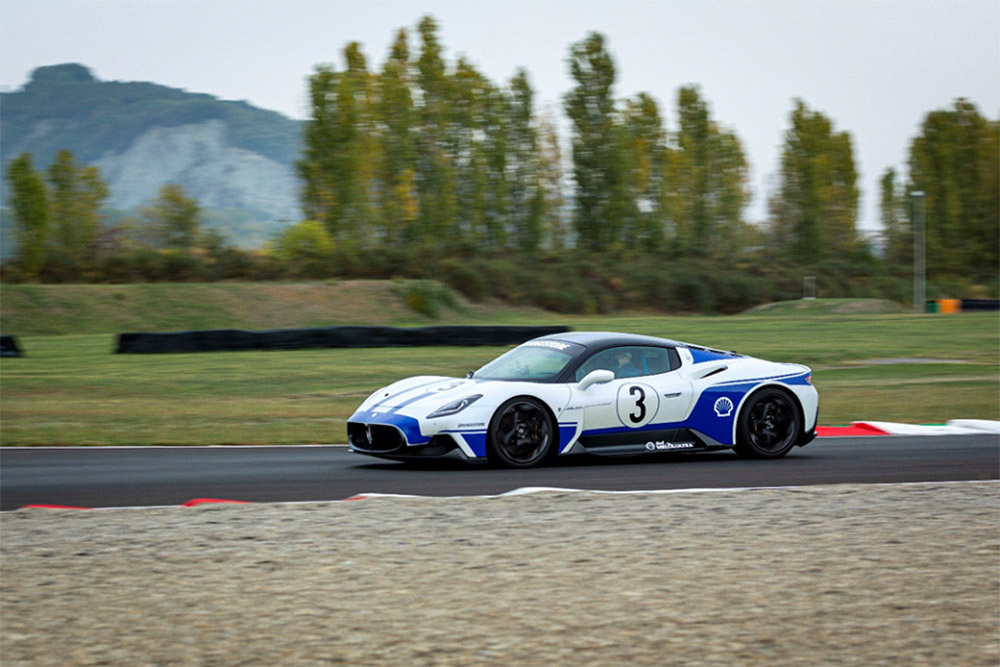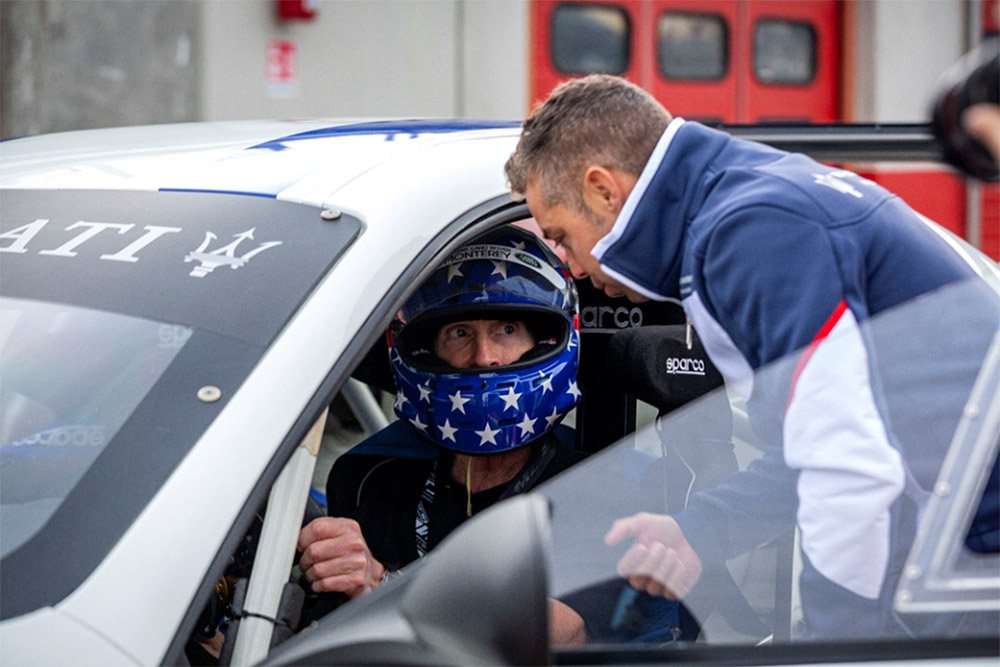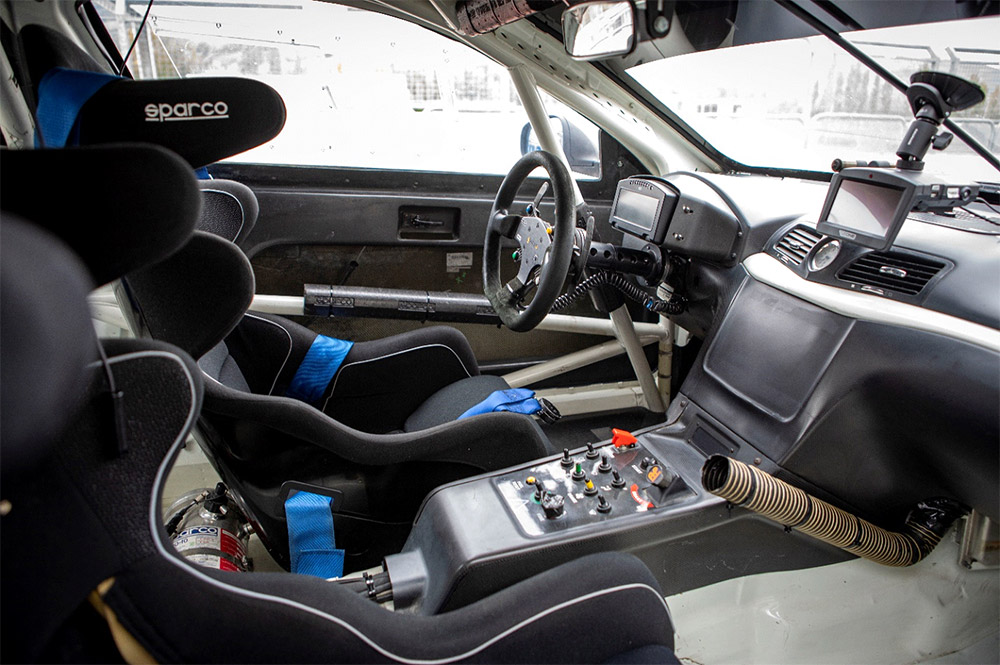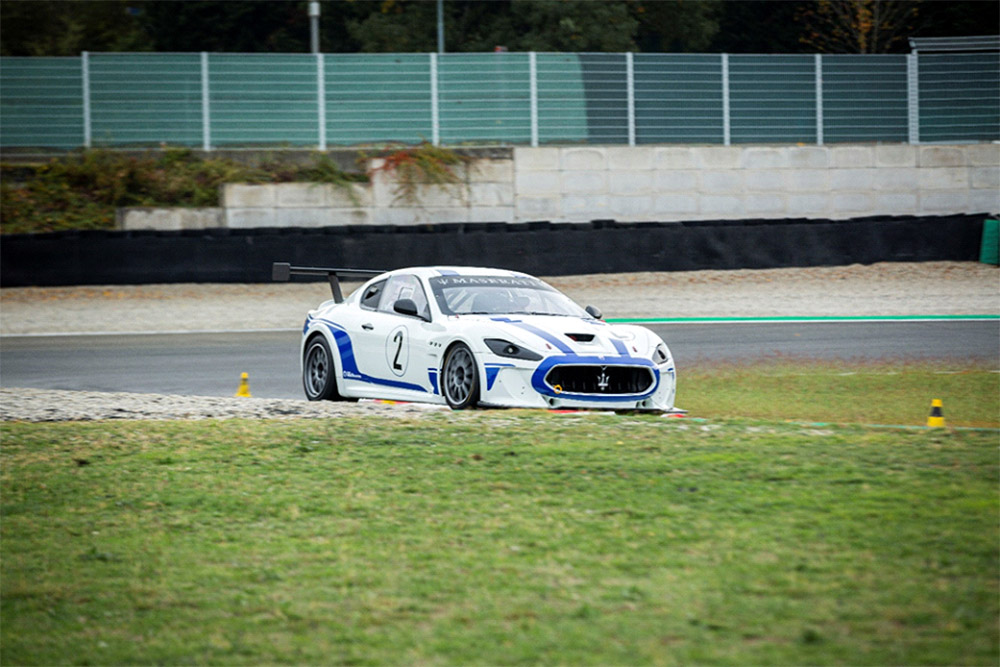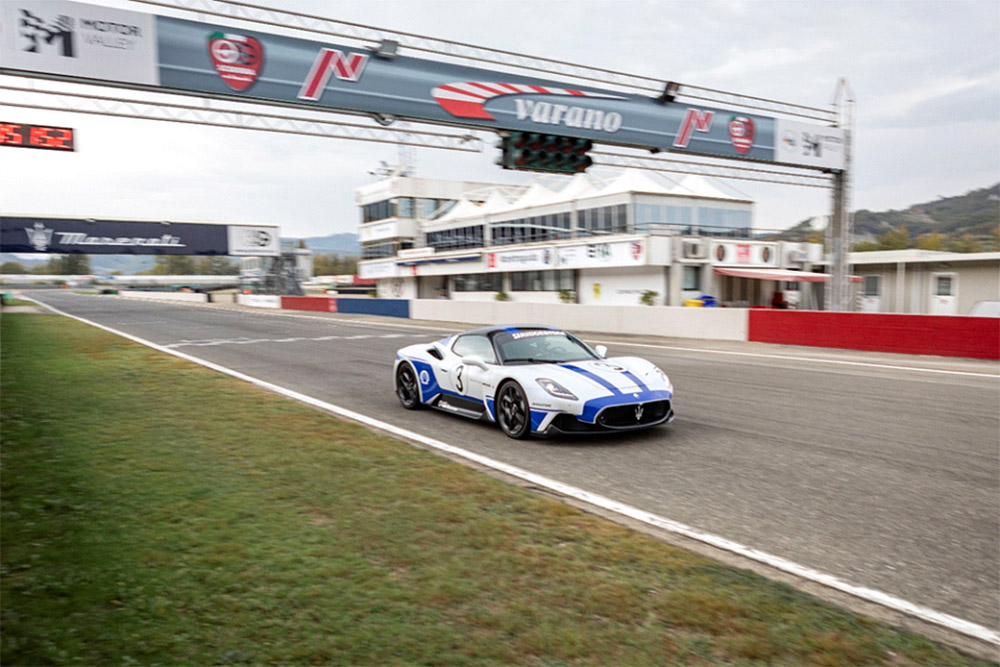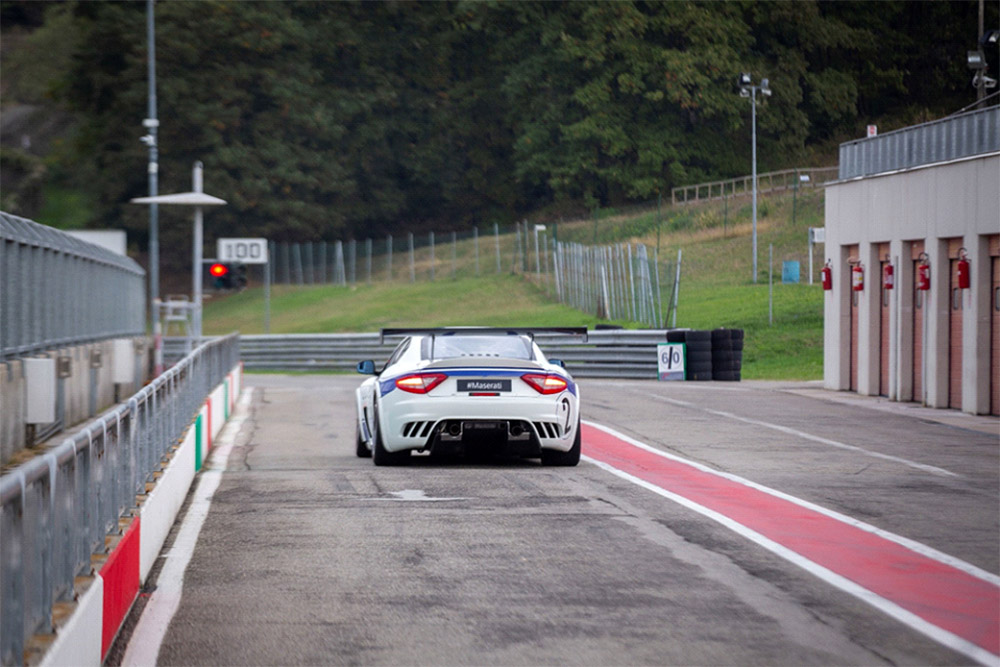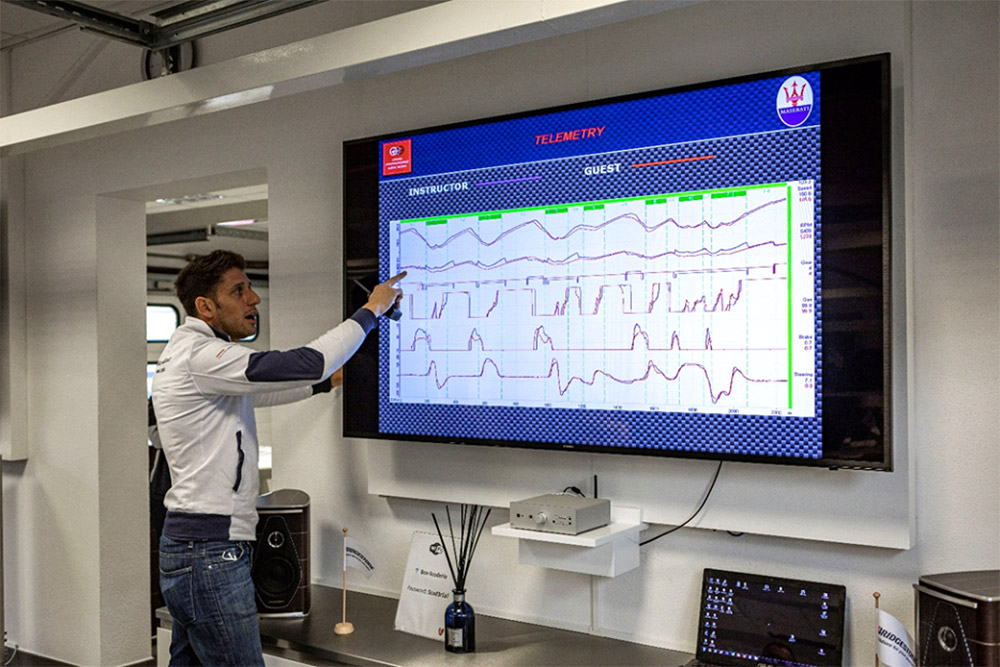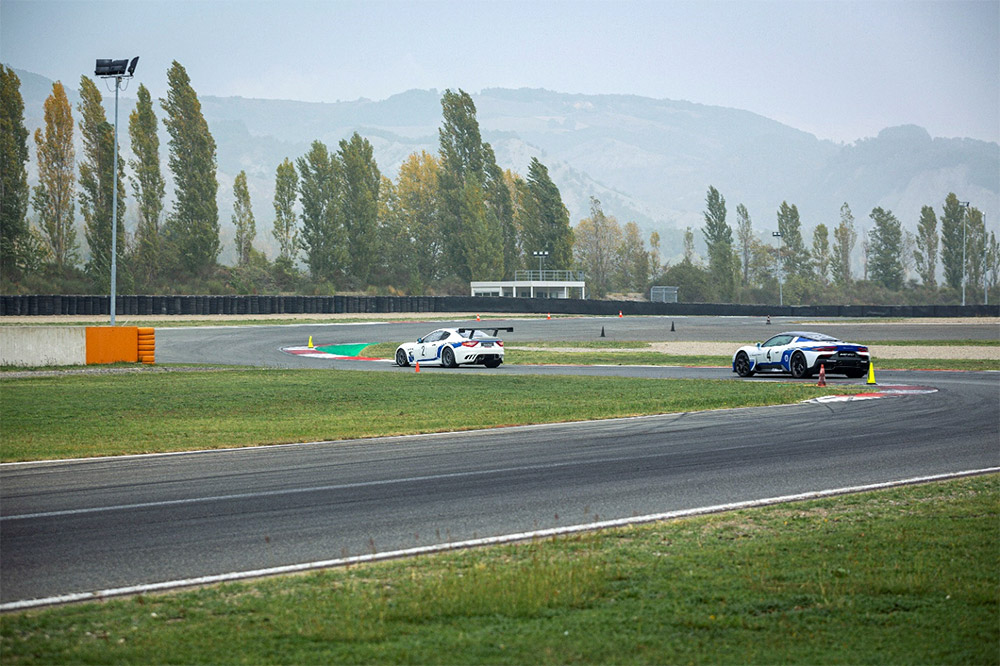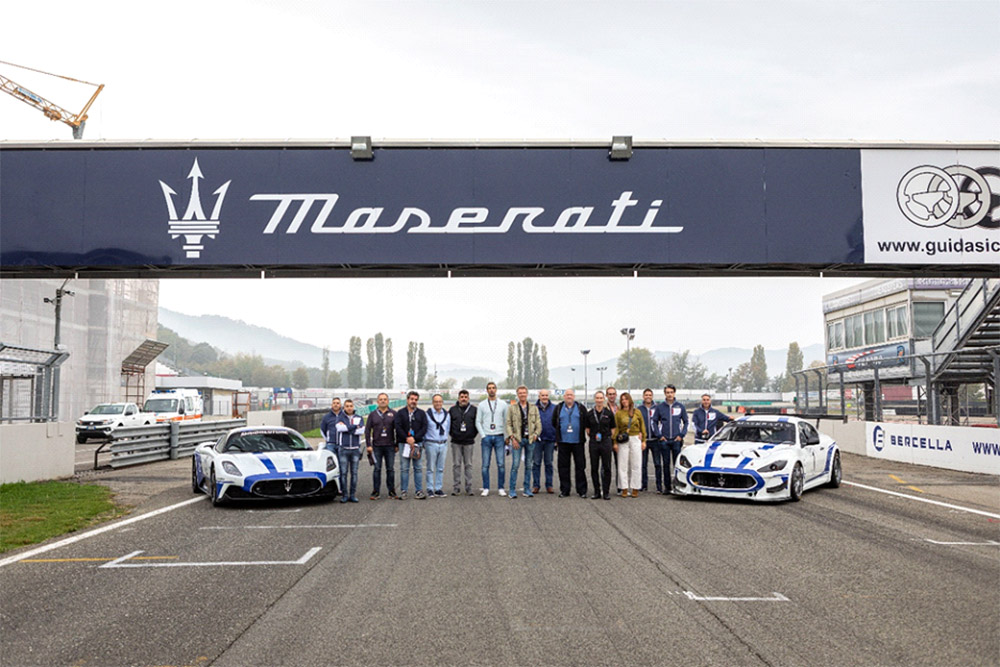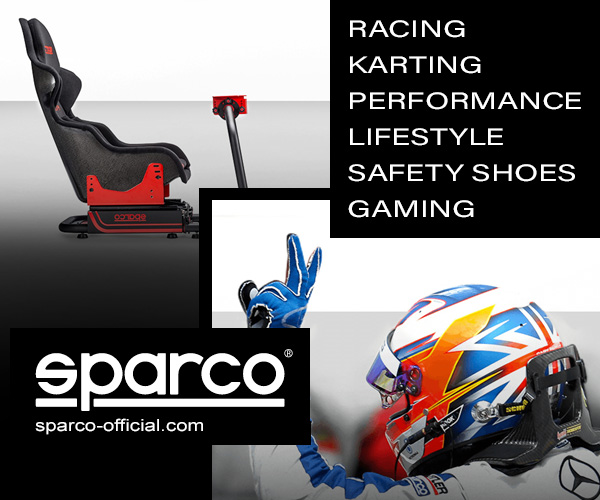The pulse of motorsports beats strongly in the heart of Italy’s Motor Valley. The Emilia-Romagna region is home to the world’s best known Italian manufacturers and a rich network of specialist shops that transform ideas into reality. Maserati has carved out a niche as a small-volume, high performance manufacturer with decades of tradition to its credit.
Speed Journal Principal Jeff Francis recently made his way to Varano de’ Melegari, a small town about an hour drive west of Maserati’s Modena base, for Italian hospitality with high performance flavor. Driving a Maserati on the road is one thing, but the track is the natural habitat of automobiles with motorsport in their bloodline. Formally known as “Autodromo Varano Riccardo Paletti,” the FIA-spec circuit in Varano is named after the former Formula One driver who was killed in the 1982 Canadian Grand Prix. The circuit is not only home for driving experiences, track days, and races, it is used by companies in the Motor Valley for testing.
While several different experiences at Varano are available, Francis opted for a one-day Master Maserati Driving Course featuring the Ghibli Trofeo four-door sedan, Levante Trofeo sport-utility vehicle, MC20 supercar, and GT4 race-car. Impressively, Maserati staff ensured plenty of track time in each. Thanks to ongoing factory Maserati support and involvement, the program has a 23-year track record.
The full Maserati story stretches back over a century. Maserati brothers Alfieri, Ettore, and Ernesto started manufacturing spark plugs in 1914 and shared a passion for engineering and motorsports. They modified and developed cars for customers but produced a car of their own in 1926. The Tipo 26, named for the year of its birth, was the first design to come from “Officine Alfieri Maserati.”
Brother Mario loved art rather than engineering and Alfieri asked him to design a logo for the brand. Mario found a monument of Neptune, the Roman god of the waters and seas, on a walk around their hometown of Bologna, Italy. In mythology and in sculpture, Neptune wielded a three-pronged fisherman’s spear known as a “trident” and Mario adopted it as the new Maserati logo. Alfieri raced the Tipo 26 with a trident logo on its nose at the Targa Florio and won the 1500cc class in its debut.
Alfieri died in 1932, but his brothers kept the firm going. In 1937, they sold their shares to the Adolfo Orsi family, who moved the company to their home town of Modena in 1940. The company has changed ownership since then, but the headquarters remains in Modena to this day.
The cool and overcast day started with an orientation briefing. Instructors covered driving fundamentals for the small group of guests. A refresher on the basics of seating position, hand position on the wheel, and sight lines up the track and through corners was helpful to establish driving principles. A driver’s ability to manage steering, braking and throttle together is the difference between a good and bad day. Instructors described weight transfer changes under acceleration and braking. They showed proper cornering lines on a track map to give guests a sense of what to expect behind the wheel.
Briefing complete, the group headed to the track. Instructors like professional racer Daniel Mancinelli took guests around the circuit in the Ghibli Trofeo for sighting laps. Mancinelli has deep experience such as driving Ferraris for privateer sportscar racing teams in championships like the SRO Championship World Challenge American Championship.
Instructors switched places with guests who then turned laps in the Ghibli Trofeo and the Levante Trofeo. Instructors talked guests through each lap, feeding instruction and guidance. Both the Ghibli Trofeo and Levante Trofeo had substantial power, but the lighter Ghibli was unsurprisingly more nimble than the heavier Levante.
In Maserati-speak, the Trofeo badge is reserved for higher performance versions in the line-up. The standard Ghibli isn’t weak, but the Trofeo treatment brings a twin-turbocharged 3.8-liter V-8 with 572 horsepower. Maserati designed the engine but Ferrari builds and assembles the powerplants. The rear-wheel-drive sedan requires only 4.3 seconds to reach 62 mph from a standstill and has enough muscle to top 200 mph. The all-wheel drive Lavante has more grip off the line which cuts half a second off the 0-62 mph time compared to the Ghibli. Top speed is “only” 187mph which is still speedy for an SUV.
Maserati has its own style. Given the strong competition from other marques, Maserati needs to be distinctive. From a design perspective, everything with a trident logo looks fast standing still. Maserati design language ensures that owners won’t worry about their car being mixed up with others. The current line-up is subtle rather than shouty. Curves and bulges in the right places not only are attractive, but hint at the performance credentials beneath the skin.
Both cars were comfortable and nimble. They wanted to follow the driver rather than wrestle the driver for control. Neither car, however, insulates the driver from the experience. The engine note is a particular treat under acceleration.
Now warmed up and accustomed to the cars, the group did a timed figure eight exercise in the Ghibli Trofeo. Instructors made a few demonstration laps around a course laid out with cones, half dry and half fully doused by sprinklers. The wet pavement easily got the Ghibli sideways. The trick was to drift the car without awakening the electronic computer assists. While the assists may help with stability, they operate without regard to the stopwatch. To make things more challenging, the sprinklers occasionally soaked the windshield which required an extra hand to find and operate the wiper to clear the glass.
Clipping cones incurred a time penalty, putting a premium on a tight line around the hairpin. Trail braking was essential, fading off the brakes and rolling gently back in to throttle. The path between the cones was narrow, but the instructor riding alongside helped find the small slivers of pavement and make line choices to shave fractions of a second. There was nowhere to hide – a trackside timing board showed results for all.
Francis’ group moved to a lead-follow session around the track in the Ghibli Trofeo, with Daniel leading the way. Another group was running the MC20 and GT4 on the track at the same time. The faster cars sliced past and whetted the appetite for later when Francis would get his chance to drive them. A lead-follow experience is like a graduation. The solo drive usually comes after driving fundamentals are established and track time has been logged with an instructor alongside. Even though the two-way radio communication through the helmets keeps everyone connected, there is a sense of freedom when released to go it alone.
Instructors demonstrated cornering lines and students saw what was possible and felt the vehicle dynamics involved. Abstractly explaining what a car is capable of is materially different than showing by example. Instructors somehow had the ability to see every mistake in their mirrors, so guests that got overly ambitious received quick feedback and instructors adjusted their pace accordingly. The driver focused on widening their scope of vision, seeing the track as a flowing series of corners and operating more instinctively rather than worrying about pleasing an instructor sitting close by.
When it worked well, instincts took over and the driver danced with the car rather than trying to impose their will on the car. Drivers became immersed in the experience of driving – precisely what the Italian driving passion is all about.
The pace of the program moved perfectly, permitting time for a quick break between drives before pleasant Maserati assistants provided an escort to the next exercise. A nicely appointed lounge area within the garage areas provided Italian treats, refreshments and a comfortable place for respite.
The time for the MC20 had come. The supermodel tilted its door to the sky, revealing a sporty and luxurious Italian interior. Entering the MC20 involved a sense of occasion, infused with anticipation for what was to follow. After sliding in to the seat, the instructor pointed out controls for adjustment. The interior was comfortable and intuitive. Visibility was remarkably good, often an afterthought for supercars. After getting the seat, race-inspired steering wheel, and mirrors in the optimal configuration and pulling the belts tight, it was time to press the start button and bring the beast to life.
Like many modern exotics, the MC20 has more performance than most drivers can utilize in most situations. Driver assists typically save the driver from themselves but the ideal scenario is for the driver to maintain sufficient control that the helpers remain silent. To make the point, instructors tracked on-board telemetry to spot instances when the driver assist measures kicked in.
The MC20 immediately showed its pedigree. Its responsive steering provided a perfect connection between driver, car and pavement. It required minimal effort and gave good feedback. Power came on instantaneously and relentlessly and quickly pulled up to 8,000 rpm where a quick paddle shift set up the same scenario again and again. Ceramic brakes kept the car balanced under heavy braking and weight transfer lap after lap. The MC20 features five driving modes – GT, Wet, Sport, Corsa, and ESC OFF. GT is the default mode and ESC OFF turns off all the driver assist tools. Students drove in Sport and Corsa modes during their laps.
Some high-performance cars are hostile or unrefined in their pursuit of race-car stiffness. Maserati engineers found a good blend of handling and ride comfort with substantial grip. It wasn’t difficult to envision the MC20 being a regular daily-driver with the ability to unleash its potential when called upon. It inspired confidence – perhaps too much in places. An instructor armed with telemetry in post-session de-briefing showed where Francis was too aggressive with the throttle. The MC20 liked early and gradual acceleration for a smooth exit and higher exit speed. Too heavy on the throttle tended to unsettle the car and require more corrections through the corner exit. The lesson was valuable. The GT4 in the next session was more unforgiving and quicker to punish overstepping the limit.
The MC GT4 was a purpose-built race car. The “MC” stands for “Maserati Corse.” It theoretically has road car roots from the GranTurismo two-door sportscar but any pretense of luxury or comfort was gone. It was a stark contrast to the finely appointed cars drove earlier in the day. If it didn’t help performance or safety, the GT4 didn’t have it. The spartan interior was all business.
A factory-produced GT sportscar comes with loads of development and engineering expertise and manufacturing skill. A limited production factory race car is a mechanical work of art. The driver slides over the roll cage bar into the snug bolstered race seat, attaches the quick release steering wheel, and feels the safety harnesses buckled and cinched tight by a Maserati assistant. There was not a head that didn’t turn or body that didn’t twitch on pit lane when the engine came to life. The 4.7-liter V-8 engine typically requires de-tuning to something like 430 horsepower for competition.
With massive respect, Francis approached his opening laps with caution. The GT4 lacks ABS or traction control and the slicks were stone cold, so it would have been easy to find trouble. Once the tires came up to temperature, the steering directed the car with precision with feedback only found in a purpose-built race car. While the GT4 had less horsepower than the street cars driven earlier in the day, it was more untamed. Too much throttle quickly broke the rear tires loose, so a sensitive throttle foot was needed to keep the rear in line. Without ABS, the brakes took a few laps of acclimation at the limit. Francis locked up a front tire at the end of a high speed straight, sending tell-tale smoke into the air and catching the attention of instructors watching from pit lane. Optimal performance required braking hard up to the limit but it was challenging to avoid going beyond. A locked tire does not turn which compromises the corner. These are the nuances that professional drivers have learned to master. Paddle change gear shifts were quick, abrupt and mechanical – rawer than a road car would tolerate and another reminder of racing intent.
After a marvelous multi-course mid-day meal, the driving resumed. The afternoon started with another stint in the MC20 and Levante. Doing laps back-to-back in such different machines was a rare comparison opportunity. Moving to the SUV after the supercar reinforced the need to utilize fundamental skills and not overly rely on the car’s capabilities to find speed. The Levante SUV had more body roll than the low-to-the-ground MC20. Carrying momentum through the corners always pays dividends in the form of exit speed regardless of the vehicle involved.
Another session followed in the GT4. Now with a better sense of the car’s capabilities, Francis was able to make better progress through the critical turns ten and eleven. A steady wheel through the sequence helped the car to glide through the roller coaster ride. It was an unmatched visceral experience. A fellow guest with a GT4 at home offered his own helpful insights and racing experiences.
After a final stint in the Ghibli, the track sessions concluded and the de-briefs got underway. Instructors produced telemetry results showing speed, braking, throttle application, steering angle, and best lap times. The ability to compare metrics with professional instructors was valuable. It not only helped highlight opportunities for improvement, but yielded an enormous amount of respect for the skill level of a professional driver.
A drag racing finale for the day put maximum stress on the MC20. One might not expect to repeatedly drag race a supercar at a road-course driving experience, but it was great fun and the MC20 didn’t blink. Drivers lined up on the front straight waiting for the red light to go out and the green to light up. Times displayed instantly for immediate gratification or disappointment. Drivers had two runs to snag their best time. No matter the results, smiles and enthusiasm flooded the atmosphere.
While other driving experiences feature road cars, it is unusual to highlight both a supercar and a race car. As a pure race car, the GT4 won’t be on the shopping list for most, but Maserati gives its guests a special treat by including a pure race car in the program. Likewise, the MC20 is a high dollar halo supercar that most will never get a chance to drive.
For the amount of driving time and selection of hardware, the Master Maserati Driving Experience is a compelling way to spend a day in Italy and a proof statement that Neptune’s trident still packs a punch. The opportunity to drive high performance cars with such tradition on an FIA-spec Italian race track with professional instructors and five-star Maserati hospitality was an unforgettable world class experience.
The Speed Journal would like to thank the Master Maserati Driving Experience team for their hospitality and Maserati for its direct support of the program. Learn more about the Maserati program and various driving experience options here.
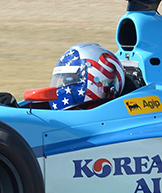
The Driver’s Series scours the world to find and explore compelling driving experiences for anyone with a driver’s license and passion for speed. We send our resident driver Jeff Francis to get behind the wheel and report back to Speed Journal readers to ride along virtually or become inspired to take on the driving experiences themselves. Are you involved with a driving experience that should be featured on The Speed Journal? Do you have a driving experience suggestion for The Speed Journal to investigate? Please contact us.



